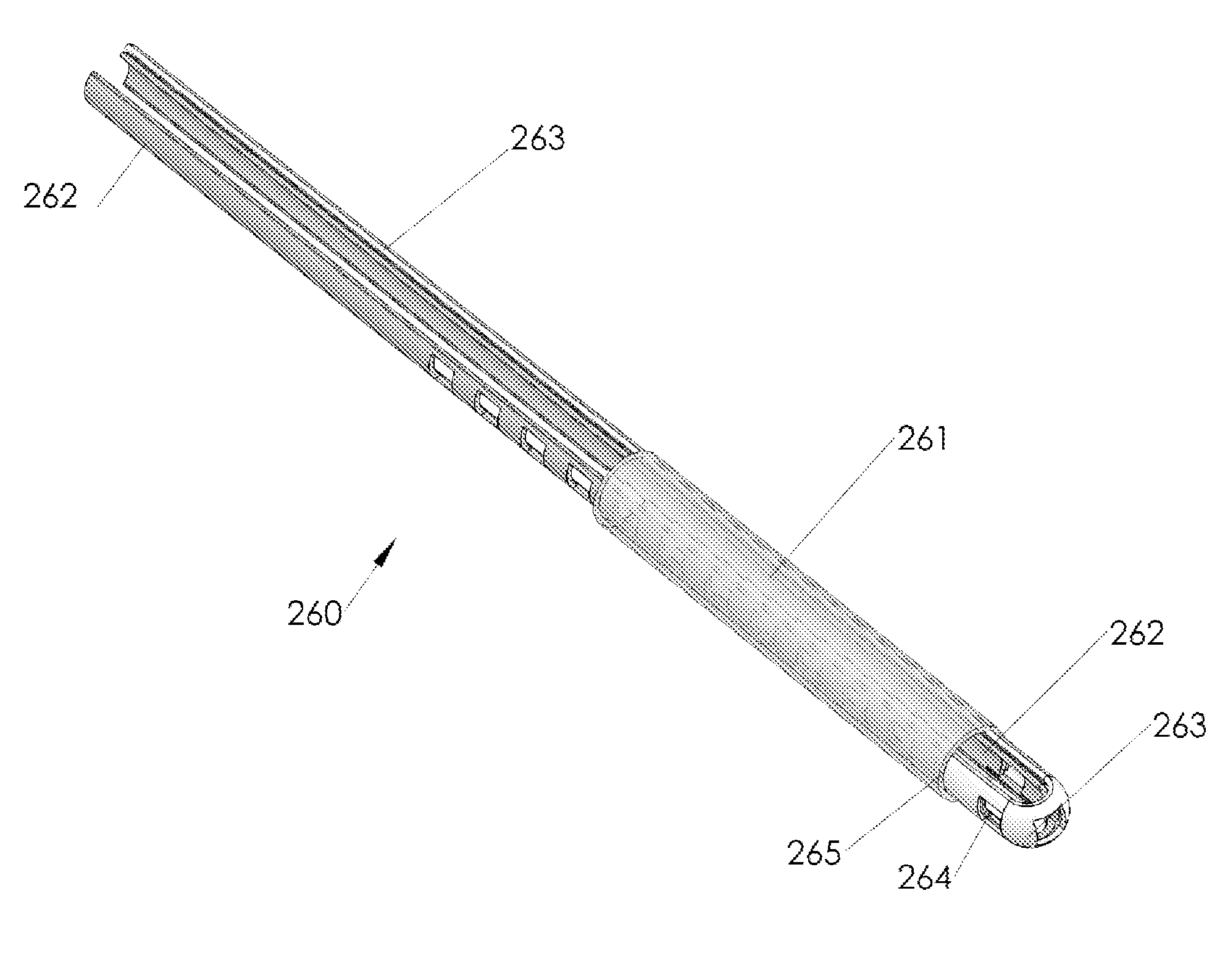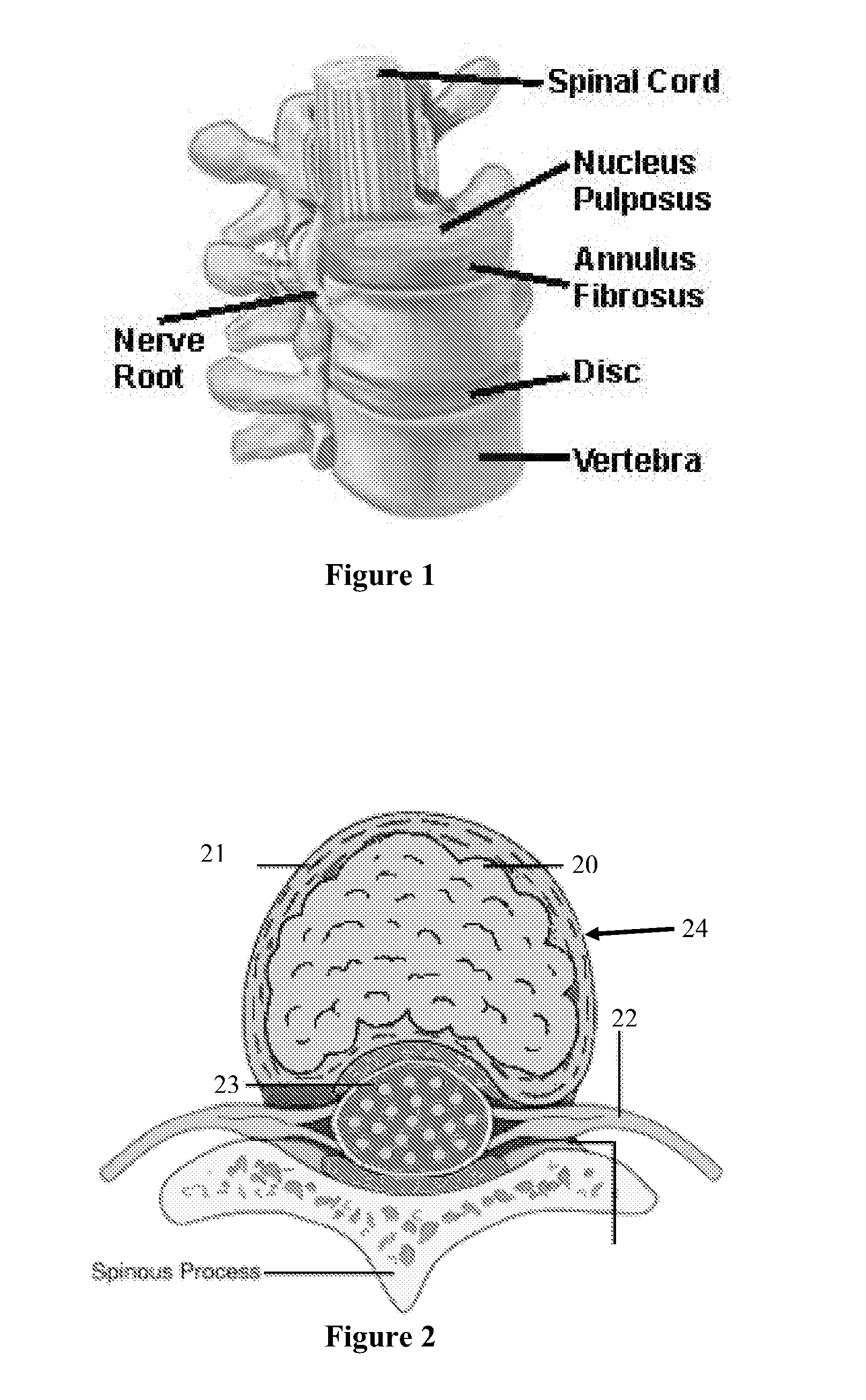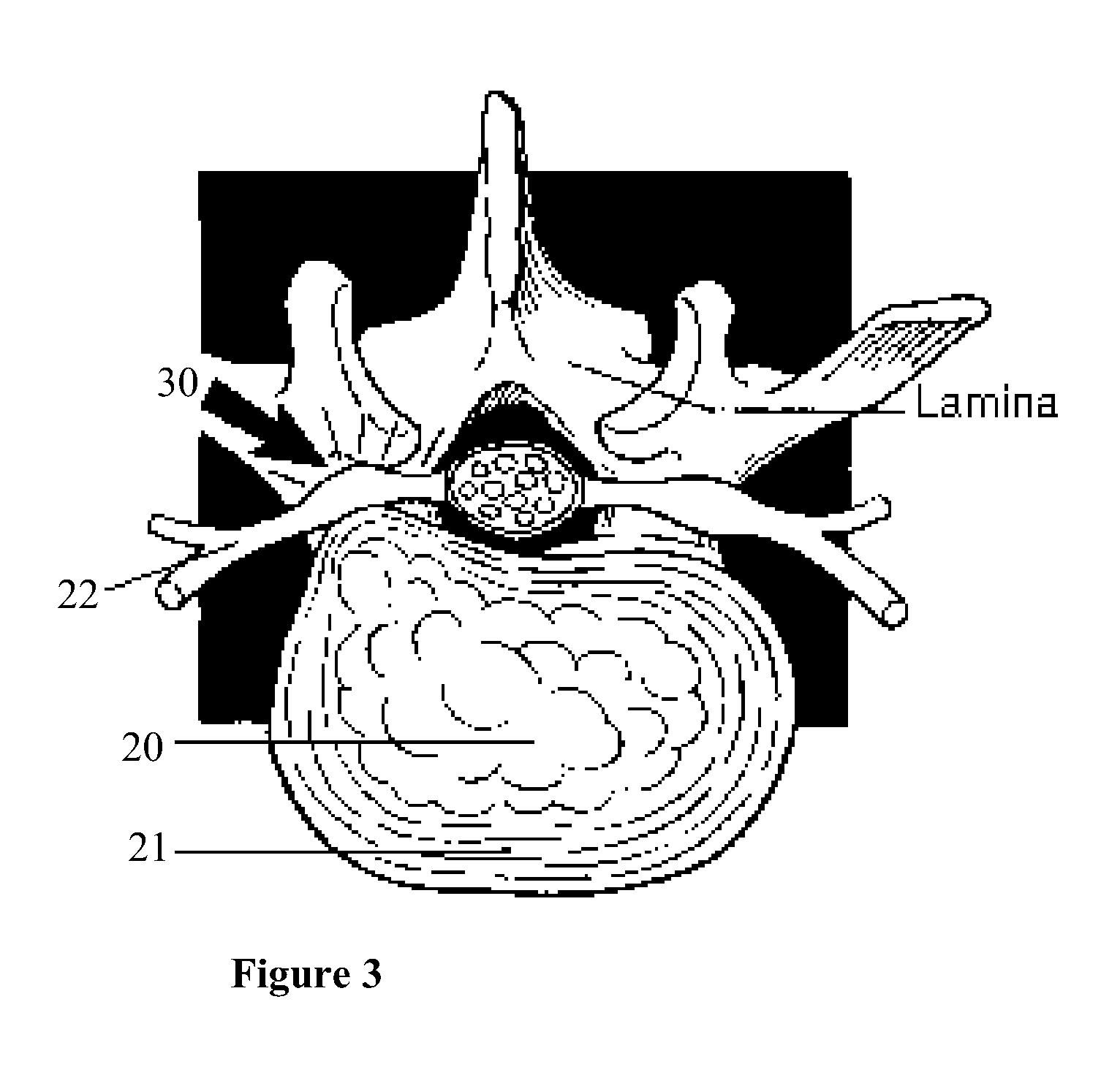Nucleus Extraction from Spine Intervertebral Disc
a technology of intervertebral disc and nucleus, which is applied in the field of nucleus extraction from spine intervertebral disc, can solve the problems of affecting the function of the annulus, affecting the patient's work and productivity, and affecting the patient's health, so as to achieve low risk of infection or discomfort, and the effect of minimal invasiveness
- Summary
- Abstract
- Description
- Claims
- Application Information
AI Technical Summary
Benefits of technology
Problems solved by technology
Method used
Image
Examples
first embodiment
[0068] the present invention 50 illustrated in FIGS. 5A and 5B contemplates a hollow tube 51 terminating at the distal end in a plurality of shorter tubes 52 and 53. Vacuum applied to the proximal end of tube 51 provides suction through lumen 54 at the opening of tubes 52 to remove nucleus 20 material. The hollow tube 51 preferably has a smaller cross-section area than the sum of cross-section areas of shorter tubes 52 and 53 yet has a larger cross section than any of the single tubes 52 or 53. The hollow tube 51 may be manipulated to move shorter tubes 52 through the nucleus space and remove substantially all of the nucleus material.
embodiment 60
[0069]FIG. 6 shows another embodiment of the present invention 60 where hollow tube 62 terminates in a plurality of openings 61 in a roughly spherical plenum 63 with a diameter larger than the diameter of tube 62. Vacuum applied to the proximal end of tube 62 provides suction at each of the openings 61 to remove nucleus 20 material. An advantage of the present embodiment 60 is that the spherical conformation of the plenum 63 serves in preventing injury to the annulus.
[0070]FIG. 7 shows another embodiment comprising a hollow tube 70 providing suction to distal side openings 71 and distal tip opening 72 when a vacuum is applied to a proximal end of tube 70. The illustrated distal portion of tube 70 is navigated throughout the nucleus 20 space to remove nucleus material. Tube 70 preferably has a terminal radius approximately the same as the inner radius of the annulus 21 of a human intervertebral disc.
embodiment 80
[0071]FIG. 8 shows an embodiment of the present invention 80 comprising a hollow tube 83 employing suction through openings 81 located on the distal side and tip. Features 82 are in the shape of fibers or short ridges that can be employed to disrupt the nucleus 20 material as the tube 83 is moved through the nucleus space. FIG. 9 is a proximal side view of embodiment 80 comprising illustrating the lumen 54 in tube 83 through which suction is applied to the openings 81.
[0072]FIG. 10 illustrates a further embodiment of the present invention 100 comprising a hollow tube 103 terminating at the distal end in a grasping mechanism. The grasping mechanism comprises arms 102 that may be opened and closed by pivoting about pin 104 when activated by mechanisms operated at the proximal end of tube 103 (not shown). The grasping mechanism serves to liberate pieces of nucleus material 20 which are then removed from the nucleus space through tube 103 by suction or carried out of the disc space by r...
PUM
 Login to View More
Login to View More Abstract
Description
Claims
Application Information
 Login to View More
Login to View More - R&D
- Intellectual Property
- Life Sciences
- Materials
- Tech Scout
- Unparalleled Data Quality
- Higher Quality Content
- 60% Fewer Hallucinations
Browse by: Latest US Patents, China's latest patents, Technical Efficacy Thesaurus, Application Domain, Technology Topic, Popular Technical Reports.
© 2025 PatSnap. All rights reserved.Legal|Privacy policy|Modern Slavery Act Transparency Statement|Sitemap|About US| Contact US: help@patsnap.com



